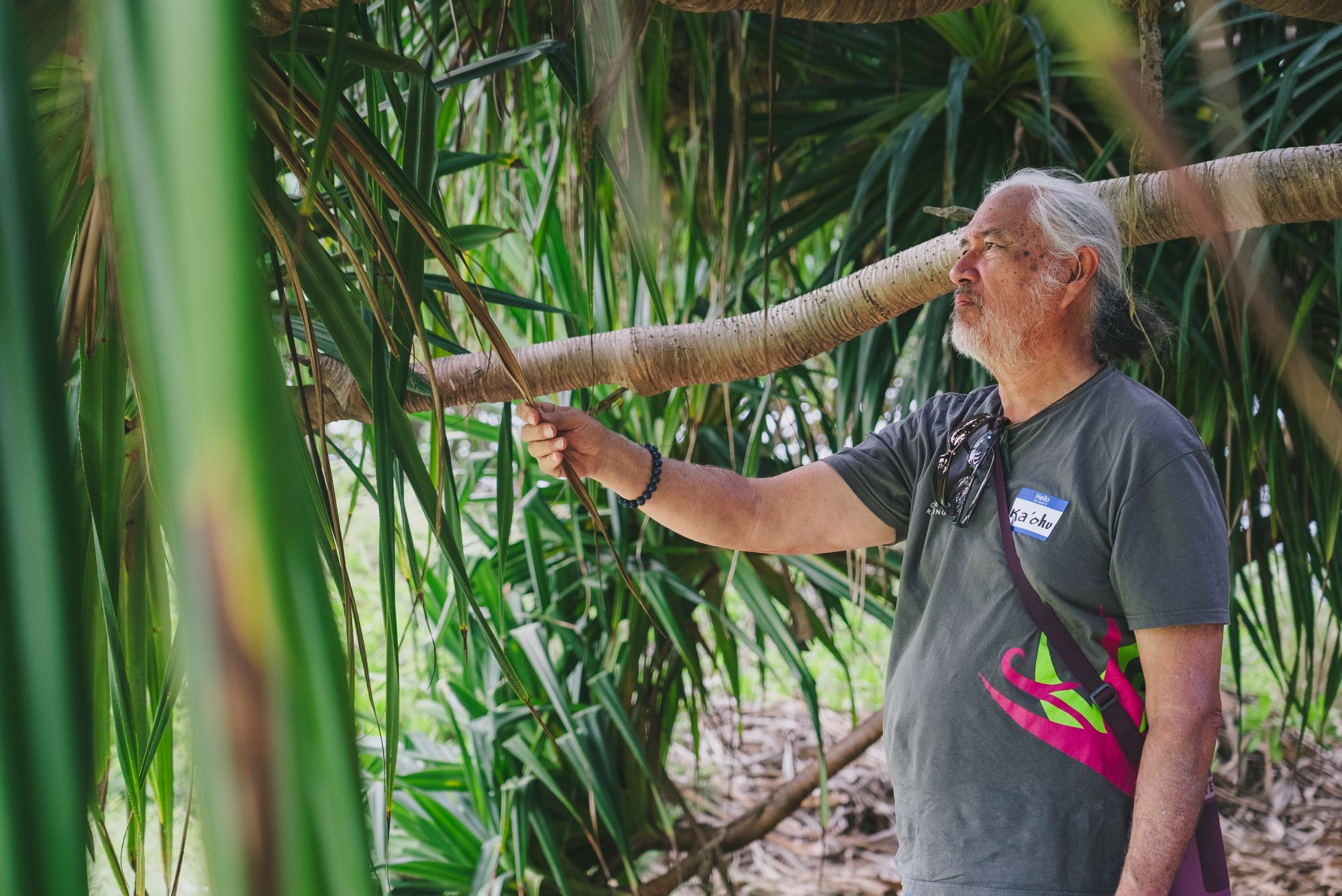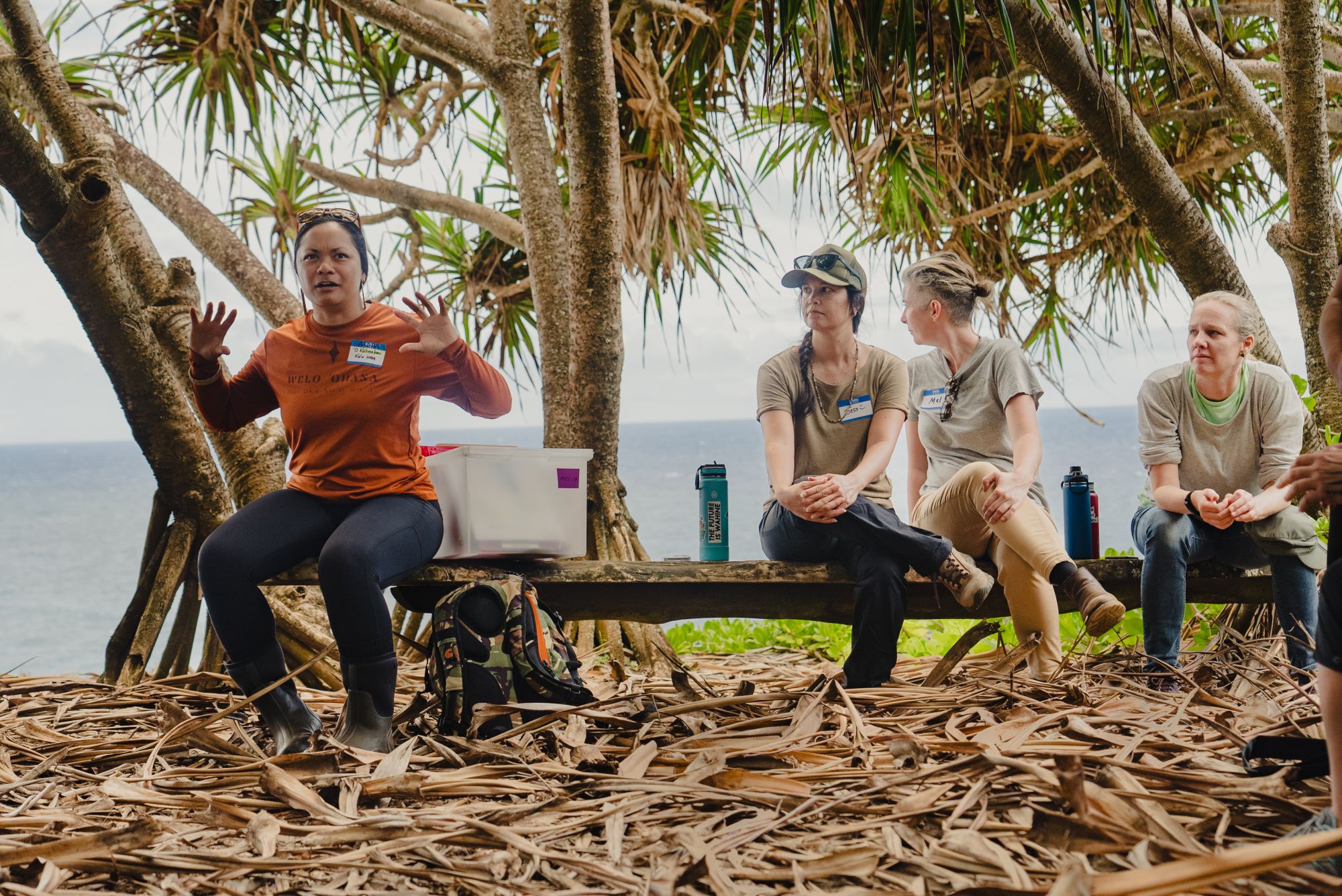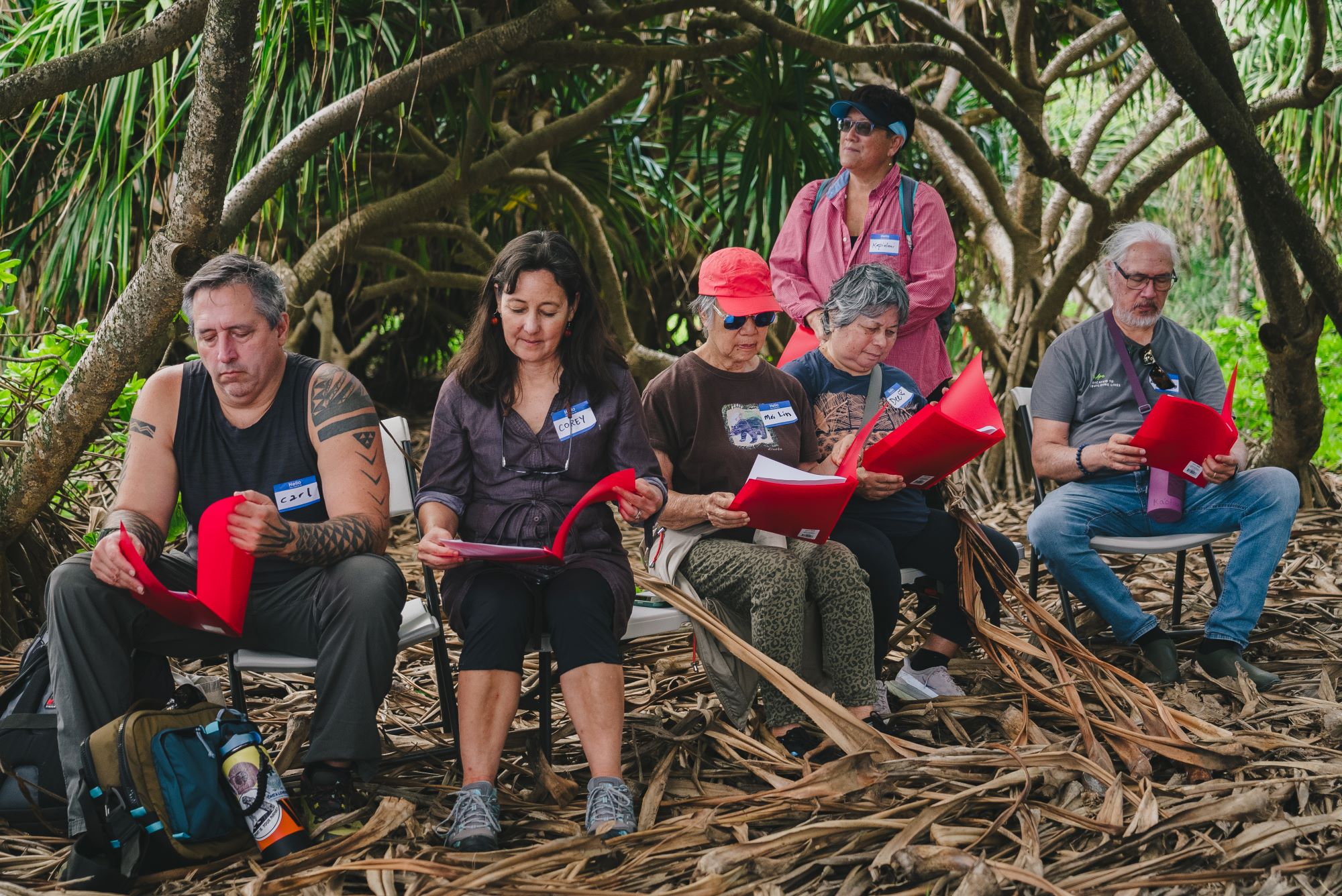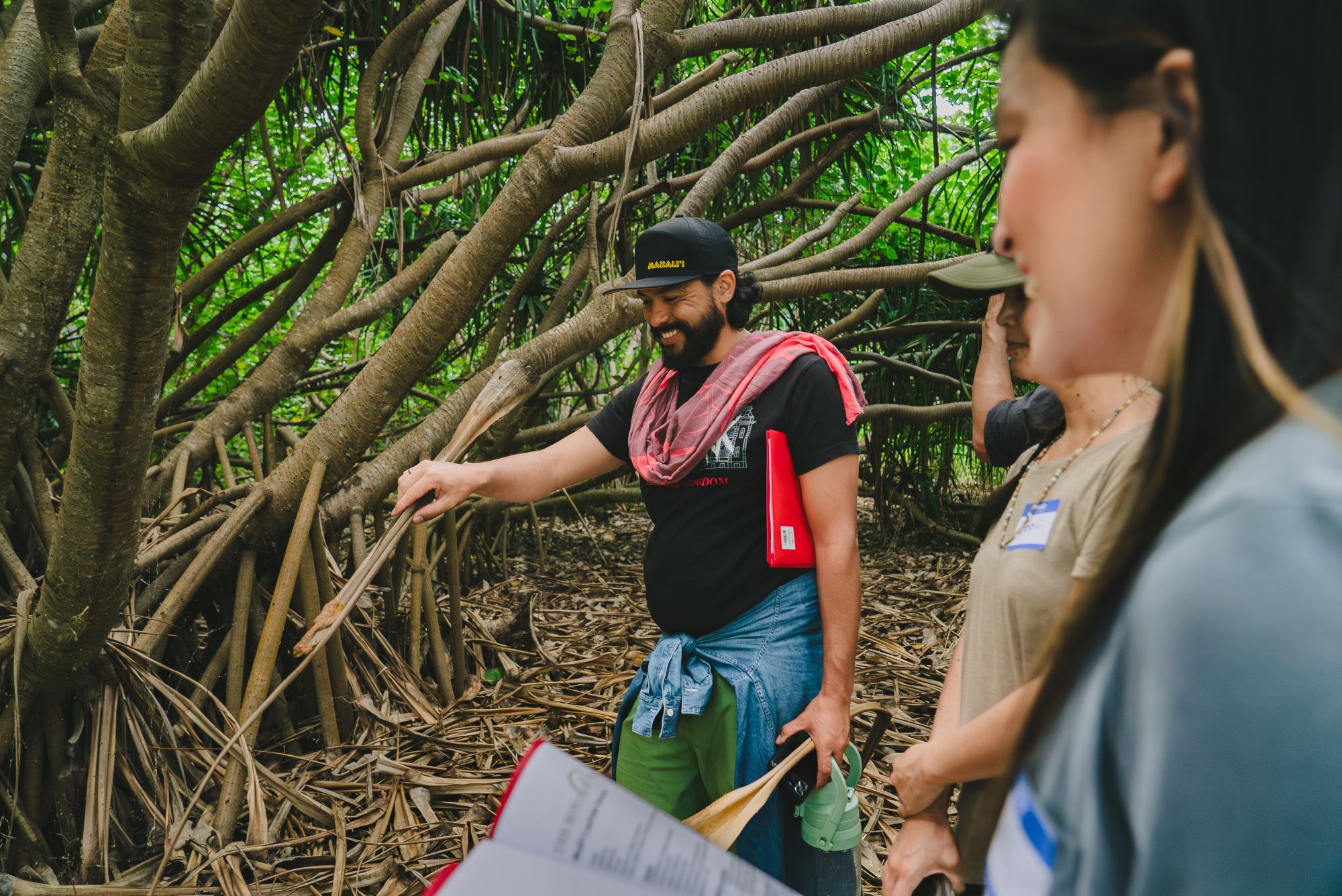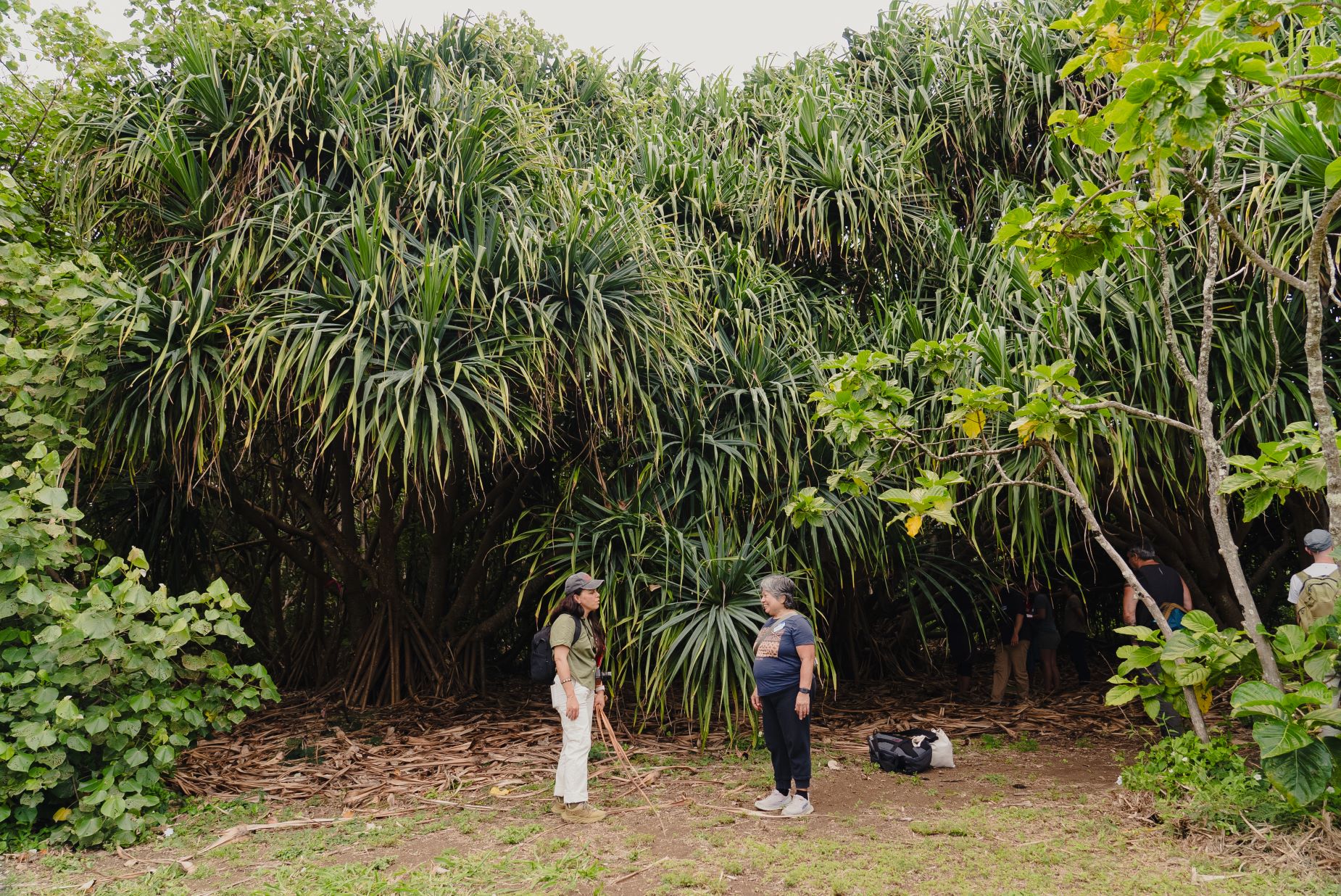by The Kohala Center staff
In April 2024, The Kohala Center (TKC) welcomed weavers, artists, scientists, and cultural managers to the hala grove at Niuliʻi, Kohala, Hawaiʻi Island for a co-learning session focused on lauhala. Supported by the USGS Pacific Island Climate Adaptation Science Centers, the project titled “Lauhala: Weaving Knowledges and Practices with a Climate Resilient and Culturally Significant Plant on Hawaiʻi Island” represents a collective of hala practitioners, scientists, and knowledge stewards. The project is supported by the USGS Pacific Islands Climate Adaptation Science Center and the Indigenous Cropping Systems Laboratory of the College of Tropical Agriculture and Human Resources at the University of Hawai’i. Partner organizations are the Enlivened Cooperative, Indigenous Cropping Systems Laboratory of UH, Kū-A-Kanaka, and The Kohala Center. Together, they are celebrating hala (Pandanus tectorius) and envisioning hopeful futures that embrace the ecological and cultural resilience of this vital plant..
Ulana lauhala, the art of weaving hala leaves, is an important Hawaiian cultural tradition. This practice is sustained by a vibrant intergenerational community of weavers, their students, and caretakers of the lauhala trees. The craft goes beyond the weaving process to include the nurturing of hala groves, the harvesting and preparation of leaves, and the creation of specialized tools.
The “Lauhala” project explores the impacts of colonialism and capitalism on the practice of ulana lauhala and the broader implications that they have on other Hawaiian arts and crafts. Investigating changes over the course of local history, it examines the destruction of hala groves due to human activities such as urban expansion and sugar plantations. Additionally, it highlights the potential for restoring hala through reforestation and revitalizing ulana practices, all while considering the effects of climate change on the future of hala.
Historically, ulana lauhala was a widely practiced skill throughout Hawaiʻi, essential for furnishing household needs. However, the diminished reliance on woven products led to a decline in these skills and the cultivation of hala trees. Today, re-engagement with ulana lauhala is fostering an expansion of community members and practitioners who care for hala groves across Hawaiʻi. This includes the development of place-based monitoring systems to assess and maintain the health of hala and lauhala, including managing threats to hala like little red fire ants, hala scale, and coconut rhinoceros beetles. By returning the care of the hala groves to the community, along with the knowledge of weaving and maintaining lauhala, the rich cultural history of lauhala can be passed on to future generations.
During the April co-learning session, TKC members shared a draft of a place-based monitoring tool designed for Niuliʻi to members of the working group. This survey tool aims to help stewards of Niuliʻi’s hala grove better understand the health indicators of lauhala, including the conditions that yield high-quality weaving material. The practitioners and artists in attendance reviewed the draft, providing valuable feedback and suggestions to improve its implementation and data collection processes.
By reinvigorating the practice of ulana lauhala and fostering collaboration among diverse groups, these projects not only preserve a crucial cultural tradition but also enhance ecological resilience. The ongoing efforts at Niuliʻi highlight the importance of integrating traditional knowledge with scientific research to ensure a sustainable and culturally rich future for Kohala and all of Hawaiʻi.


